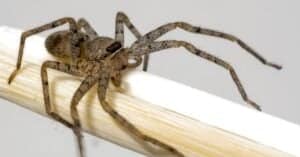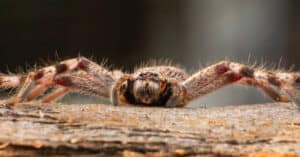Spiders are among the creepiest insects around, but thankfully, they are only found alone… right? Wrong! In case you needed more reason to call pest control this year, learning that “social spiders” exist may just be the final push. Today, we will learn about these interesting insects and how they group up together. Additionally, we will explore some of the advantages that spiders gain from living as a group. Let’s get started!
What is a social spider?
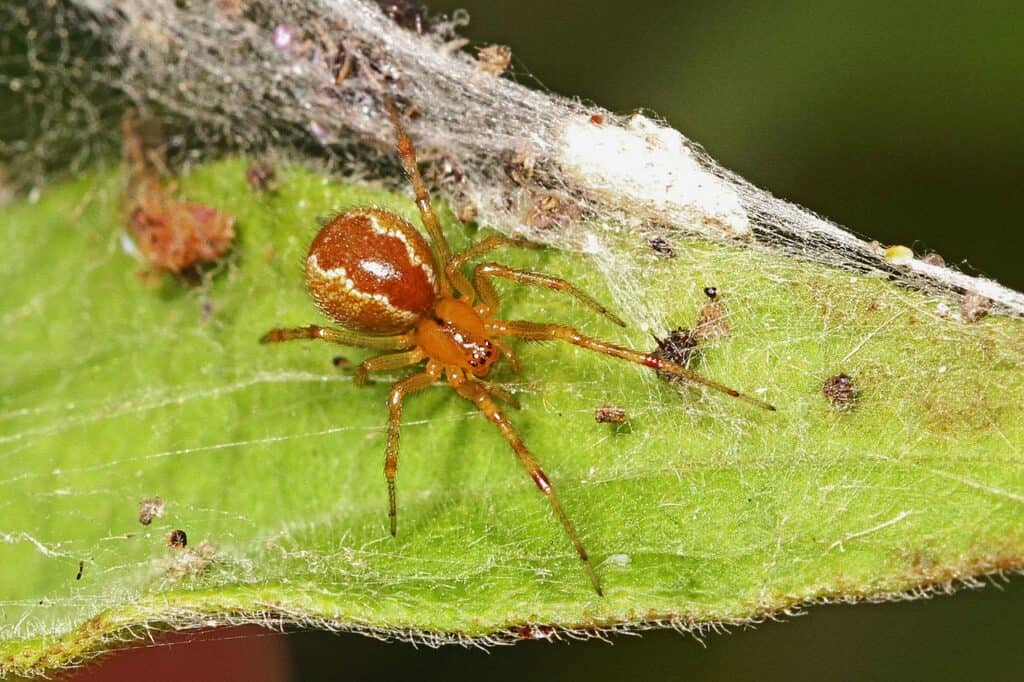
Quasi-social cobweb spiders often live in large, social communities.
©Judy Gallagher / CC BY 2.0, via Wikimedia Commons – License
When we generally think of spiders, we think of creepy, solitary insects that live in webs in the dark spaces of the attic. While that is true, it isn’t the whole story. Most of the spiders that people in the western world encounter are known as solitary spiders, but an entire group of spiders exist that live, hunt, and create massive webs together. These groups of spiders are known as “social spiders.”
Social spiders are most commonly found in tropical regions across the world, but a few species have made a home in the eastern United States. When social spiders are grouped together, they are collectively known as a “colony,” just like ants. In fact, social spiders resemble ants in many ways! Often, these spiders hunt large prey that a single spider can’t take down, build large webs that single spiders can’t construct, and more. As we all know, the power of the pack is usually stronger than the lone wolf (spider, in this case).
There are a total of about 45,000 recognized species of spiders, but only 23 species are officially recognized as “quasi-social.” The general rules for classifying spiders as social are that they need to show cooperative brood care, use the same web and nest, and exhibit generational overlap. Still, it’s important to know that most species of social spiders express different levels of social behavior. Additionally, the hyperlocal environment may cause spiders to exhibit social behaviors while the same species is solitary a mere mile away.
How do social spiders hunt?
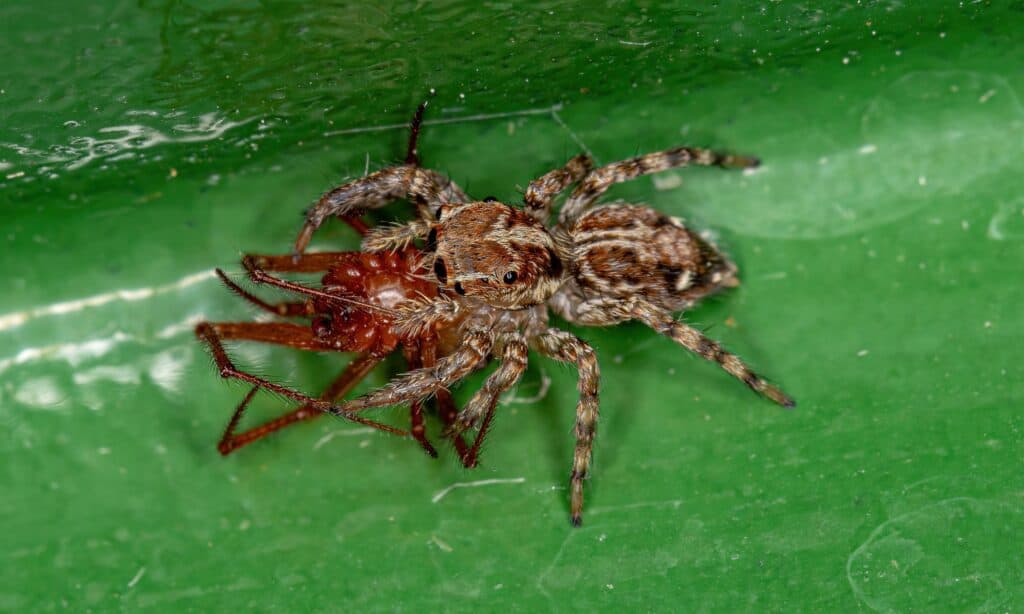
Social spiders regularly kill prey 15x their weight.
©Vinicius R. Souza/Shutterstock.com
With various species worldwide, it’s important to note that most colonies have their own details on how hunting is carried out. Some spiders hunt at night and others during the day, for example. Still, there are some things that most colonies have in common.
Although a single spider and web are formidable for most insects, the ability to hunt is magnified when the whole colony pitches in. With Anelosimus eximius, for example, a communal web is created in order to maximize the group’s potential biomass capture per spider mathematically. Using vibration signals from the prey, the spiders move forward and collectively attack. Even more, the members of the colony can sense the vibrations of one another and take their queues from each other.
Using this method of vibration sensing, the spiders can effectively cooperate without a designated caste system. Essentially, there are no leaders, no underlings, or special roles, yet the spiders still work effectively.
What is the largest prey that social spiders can kill?
Looking at Anelosimus eximius again, we see just how effective communal hunting can be. When a creature is caught in the thick web created by thousands of spiders, the group can work together to bring it down. The maximum size of a colony determines the size of the prey they can take down, but social spiders regularly bring down prey that is 15x larger than the individual.
In especially large colonies, social spiders have been recorded killing bats, birds, and large insects.
3 examples of social spiders
There are many species of social spiders, and every one is different. Let’s look at a few.
Anelosimus eximius
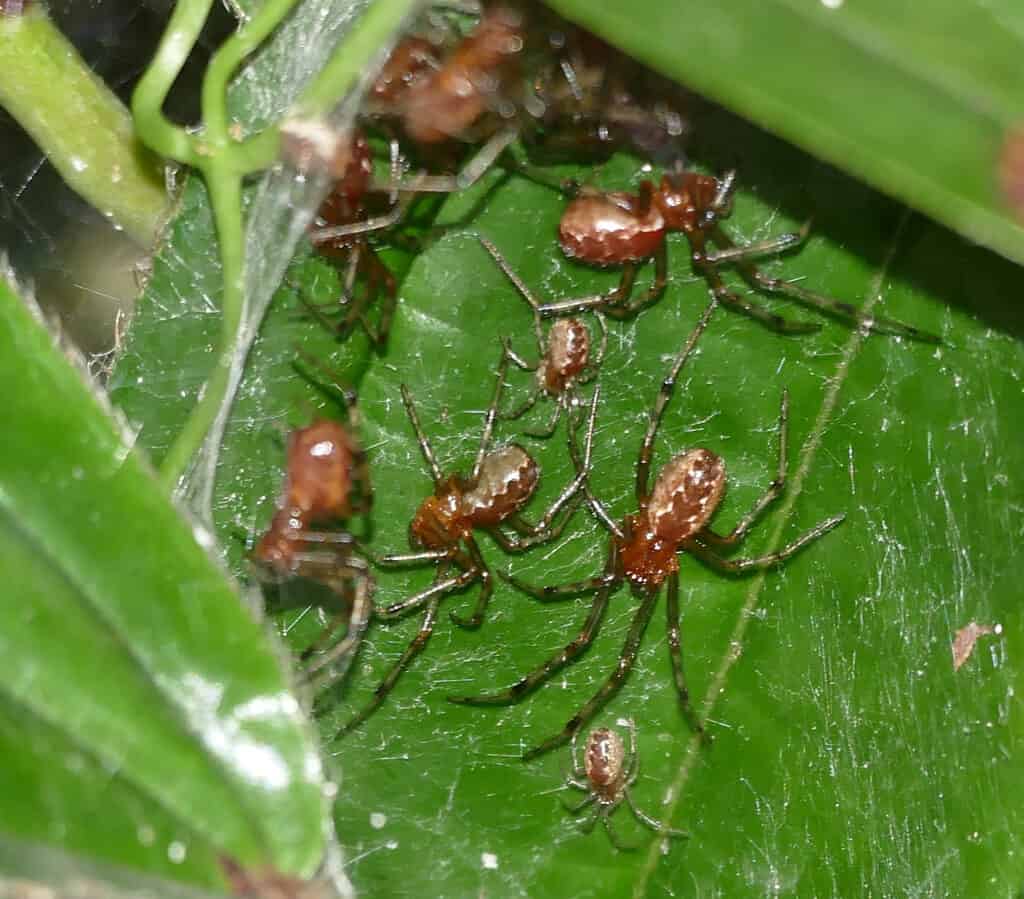
The Peruvian Anelosimus eximius spider lives in colonies of up to 50,000 individuals.
©Bernard DUPONT / flickr – License
We’ve already mentioned Anelosimus eximius a few times today! Anelosimus eximius is a social spider species living in the Lesser Antilles in South America. Their classification as quasi-social is apt, although they are so organized that they are nearly classified as eusocial, the highest level of social organization in sociality. The only thing holding these spiders back from the highest social classification is their lack of castes. Essentially, certain members don’t have specialized tasks (whereas ants do). In large colonies, numbers can top around 50,000 individuals.
Parasteatoda wau
Found in Wau, Papua New Guinea, Parasteatoda wau is a species of social spider that was first described in 1982. These spiders make flat, horizontal webs with leaves interspersed across them. The leaves act as hideaways for the spiders during the day. At night, they wait for insects to fly through the web and collectively feed.
Bagheera kiplingi
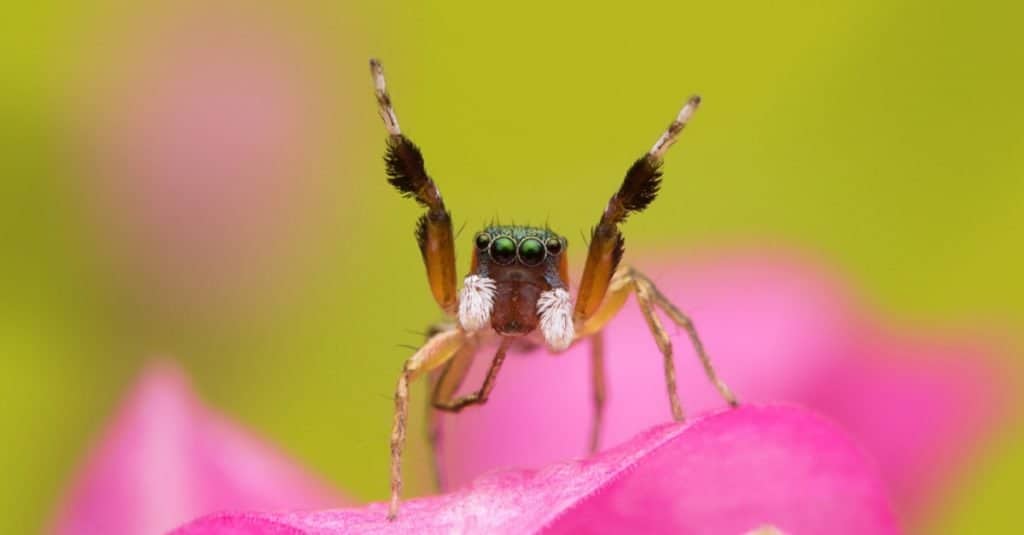
Bagheera kiplingi is the only vegetarian spider in the world.
©Joyce LCY/Shutterstock.com
Bagheera kiplingi is a peculiar species of spider in that it’s totally herbivorous. These jumping spiders are found in Central America and are among the only spiders in the world that are primarily herbivorous, although they have the capacity to be omnivorous. These spiders live in small colonies in order to protect their food source and eggs.
The photo featured at the top of this post is © Joyce LCY/Shutterstock.com
Thank you for reading! Have some feedback for us? Contact the AZ Animals editorial team.




